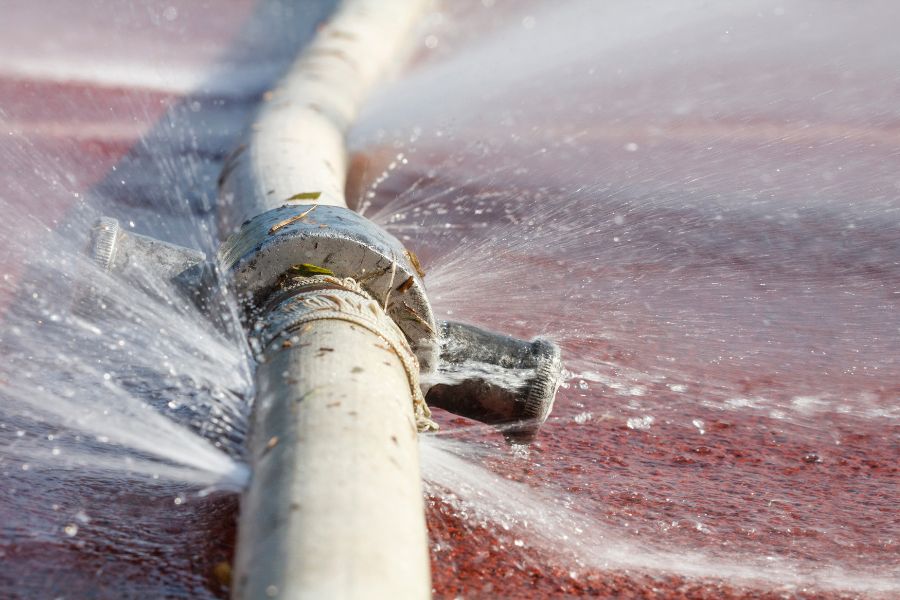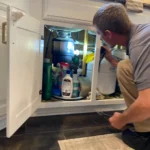A damaged sewer line can create a nightmare for homeowners, leading to unpleasant odors, backed-up drains, and even potential health hazards. When faced with these issues, the immediate question becomes: Who is responsible for sewer line repair? Understanding where the responsibility lies and what sewer line repair entails is crucial for handling this situation effectively.
1. What Is a Sewer Line and How Does It Work?
A sewer line is a critical part of a home’s plumbing system, carrying wastewater away from your home to the municipal sewer system or a septic tank. Here’s how it works
- Inside Your Home: Wastewater from sinks, toilets, bathtubs, and appliances flows through indoor pipes to the main sewer line.
- Main Sewer Line: This large underground pipe connects your home’s plumbing to the municipal sewer system or a private septic system.
- Municipal Sewer System: Once wastewater enters the municipal system, it travels to a treatment plant for processing.
Any blockage, damage, or break in this system can cause wastewater to back up into your home or yard, necessitating immediate repairs.
2. Who Is Responsible for Sewer Line Repair?
Responsibility for sewer line repair typically depends on the location of the damage. Generally, the division of responsibility is as follows
2.1 Homeowner’s Responsibility
- Private Property: Homeowners are responsible for maintaining and repairing the portion of the sewer line that is on their property, including the lateral sewer line (the section connecting your home to the main municipal sewer line).
- From the Home to the Property Line: This section of the sewer line falls under the homeowner’s jurisdiction, even if it extends under sidewalks or driveways.
2.2 Municipal Responsibility
- Public Property: The municipality is responsible for the sewer main located in public streets or utility easements.
- Beyond the Property Line: Once the sewer line reaches the connection point to the main municipal sewer line, the city or utility company typically assumes responsibility.
2.3 Gray Areas
Some regions have different regulations regarding the transition between private and public sewer lines. It’s essential to check with your local municipality or utility company to understand your specific responsibilities.
Tip: Many cities offer detailed maps or guidelines outlining sewer line responsibilities, which you can access through their public works department.
3. How to Determine Sewer Line Responsibility
If a sewer line problem arises, follow these steps to determine who is responsible for repairs
- Check Your Property Survey: This document shows the boundaries of your property and the location of utility lines.
- Contact Your Local Utility Company: They can provide information on where the municipal sewer line begins and your responsibility ends.
- Schedule a Sewer Line Inspection: A professional plumber can inspect the sewer line with a camera to locate the damage and identify where it falls.
- Review Local Ordinances: Local regulations can vary, so review city ordinances or contact your municipal office for clarity.
4. Common Causes of Sewer Line Damage
Understanding the causes of sewer line damage can help you prevent costly repairs. Here are the most frequent culprits
4.1 Tree Roots
- Tree roots seek out moisture and can infiltrate sewer pipes through small cracks, causing blockages or pipe breakage.
- Prevention: Avoid planting large trees near sewer lines, and use root barriers if necessary.
4.2 Pipe Corrosion
- Older sewer lines made of metal (e.g., cast iron) can corrode over time, leading to leaks or collapses.
- Prevention: Regular inspections and maintenance can identify corrosion before it becomes severe.
4.3 Ground Shifting
- Natural soil movement, earthquakes, or construction activities can shift pipes, causing misalignment or cracks.
- Prevention: Stabilize soil near your sewer lines if possible and monitor for ground movement.
4.4 Clogs and Blockages
- Grease, hair, food waste, and non-flushable items can cause sewer line clogs.
- Prevention: Avoid flushing anything other than toilet paper and human waste. Use drain screens to catch debris.
4.5 Aging Pipes
- Pipes deteriorate over time, especially if they are made of older materials like clay or Orangeburg.
- Prevention: Consider replacing aging pipes with more durable materials like PVC.
5. Sewer Line Repair Costs
The sewer line repair cost varies based on several factors, including the extent of the damage, repair method, and location. Here’s an overview of potential costs
5.1 Typical Cost Range
- Minor Repairs: $200 to $1,000 (e.g., clearing small blockages).
- Moderate Repairs: $1,000 to $3,000 (e.g., repairing small sections of damaged pipe).
- Major Repairs: $3,000 to $7,000 (e.g., extensive excavation or replacement of larger sections).
- Full Sewer Line Replacement: $7,000 to $20,000, depending on pipe length and accessibility.
5.2 Factors Affecting Cost
- Length and Depth of Pipe: Longer or deeper sewer lines require more labor and equipment, increasing costs.
- Location: Repairs under driveways, sidewalks, or landscaping may require additional restoration work.
- Repair Method:
- Traditional Excavation: Involves digging trenches to access the pipe, which can be costly and disruptive.
- Trenchless Repair: Methods like pipe lining or pipe bursting are less invasive but can still be expensive.
- Severity of Damage: Simple blockages cost less to repair than collapsed or extensively damaged pipes.
- Labor Costs: Prices vary by region and contractor experience.
6. Types of Sewer Line Repair Methods
Understanding the different repair methods can help you choose the best option for your situation
6.1 Traditional Excavation
- Process: Digging a trench to access and repair or replace the damaged pipe.
- Pros: Suitable for extensive damage.
- Cons: Disruptive, costly, and requires significant restoration work.
6.2 Trenchless Pipe Lining (Cured-in-Place Pipe – CIPP)
- Process: Inserting a resin-coated liner into the existing pipe, which hardens to create a new pipe within the old one.
- Pros: Minimal digging and disruption.
- Cons: Not suitable for severely collapsed pipes.
6.3 Pipe Bursting
- Process: Breaking the old pipe while pulling a new pipe into place.
- Pros: Replaces the pipe without extensive excavation.
- Cons: Requires specific conditions and access points.
7. How to Prevent Sewer Line Issues
Prevention is the best approach to avoid costly sewer line repairs. Here are some tips
- Regular Inspections: Schedule annual sewer line inspections.
- Watch What You Flush: Avoid flushing wipes, paper towels, and other non-flushable items.
- Tree Placement: Keep trees and large shrubs away from sewer lines.
- Install Root Barriers: Prevent tree roots from infiltrating pipes.
- Use a Grease Trap: Prevent grease and fat from entering the sewer line.
When faced with sewer line issues, understanding who is responsible for sewer line repair is essential for resolving the problem efficiently. Generally, homeowners are responsible for the portion of the sewer line on their property, while municipalities handle repairs beyond the property line. Repair costs can vary significantly based on the location, severity, and repair method.
By knowing the causes of sewer line damage, recognizing signs of trouble, and taking preventative measures, you can protect your home from costly repairs and maintain a smoothly functioning sewer system.











